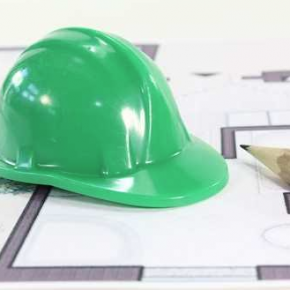
GUEST ARTICLE: The danger of the ‘health and safety gone mad’ attitude
Richard Vann, Managing Director at the RVA Group, explores the danger of the ‘health and safety gone mad’ attitude in this guest article…
It’s a phrase we commonly hear, regardless of industry or workplace circumstances.
The perception that ‘the world has gone mad’ when it comes to risk assessments, site inductions, and training regimes. People have a job to do after all, and there absolutely can be examples when safety mechanisms can be so rigorous, they actually become restrictive. Worse still, they can have unintentionally adverse consequences.
There are other scenarios, of course, when safety measures have been purposefully considered, at length for all the right reasons. It’s therefore a careful balance of common sense, managed by someone with the appropriate expertise, but communicated so that the responsibilities of everyone are understood. This is when the stigma surrounding safety – particularly the ‘health and safety gone mad’ statement – will start to subside.
Here are 10 conversation starters:
1. Whatever your attitude to safety, and however tricky conversations might sometimes be, we must keep talking about it, particularly when thinking about safety incidents – some of which are fatal. This can be an emotive and distressing subject. However, we cannot be dismissive of the data – the numbers aren’t merely statistics, they’re lives lost and families broken.
The HSE’s report – Workplace fatal injuries in Great Britain, 2021 – for example, is a tough read. There were 142 employees killed in work-related accidents in 2020, with 60 additional work-related deaths among members of the public. The report introduction states that: ‘Fatal injuries are thankfully rare events’. But numbers of any scale should remind us that a safety-first mindset is crucial, however hazardous – or not – a ‘workplace’ may first seem.
2. There are no degrees of safety, on a sliding scale. Something is either safe, or isn’t, as you don’t know the tipping point between having a near miss and someone being killed. That’s why there can be no excuses surrounding decisions made – or not – to follow safety protocol.
3. The first stage in any process should be taking steps to remove or mitigate risk to the minimum practicable level. Proactively appraising a situation and understanding the consequences of inappropriate behaviour such as ‘corner cutting’, is essential – and everyone has a role to play.
4. Think about physical safety measures that can be taken, from more well-known actions such as the wearing of PPE and the erection of handrails, to perhaps less obvious rescue measures such as how we’d get someone down if they had a heart attack when working at height.

5. We should all work with the attitude that: ‘I want to go home tonight with ten fingers and ten toes’. Because, what if a series of workplace behaviours saw a number of seemingly minor oversights coalesce, just once – when person A did X, person B didn’t do Y, and person C presumed someone else would take care of Z – with devastating consequences?
6. Familiarity breeds contempt. Try to establish a culture whereby risks are revisited. We’re human, after all, and when a scenario becomes habitual, we’re scientifically proven to fall out of a certain behaviour. We therefore need to keep talking about safety, from the ‘bottom up’, with no gaps.
7. Nobody would openly say: ‘I deliberately take risks at work’, or: ‘We don’t do things particularly safely on our site’. However, a continued and ideally independent assessment of that safety attitude should take place.
8. Yes, demolition is inherently hazardous, but experienced demolition professionals know how to assess, mitigate and manage the risks accordingly, relevant to the scale, type, and number of hazards at play. This doesn’t mean comparatively less hazardous environments are risk free.
9. Nevertheless, we must remain sensible. We all have jobs to do, and in some cases the ‘health and safety gone mad’ statement is justified.
If someone is to visit a power station, for example, but they only need to access an administrative area for a short meeting, it is ludicrous for them to watch the same lengthy induction video as someone who has been asked to repair the electricity generation equipment at the facility’s heart. Here, even the best intentions could have a negative effect. The visitor may zone out completely, overwhelmed by the level of irrelevant information, to the point they miss the detail they do need to digest, to stay safe.
Remain focused on reasonable and practicable measures.
10. Finally don’t forget reactive safety strategies – the investigation of an incident, root cause analysis, reporting, the evaluation of learnings, and the implementation of improvements. The world is constantly changing, and sadly it isn’t possible to predict every eventuality. But this responsive exercise – however imperative – means an incident has already happened. So, let’s explore what more we could do to prevent them in the first place.
Latest news

22nd November 2024
Insight Data: Using Marketing Data to Build a Successful Business in 2025
Alex Tremlett, Insight Data’s Commercial Director, discusses the challenges for construction firms in 2025 and shares six strategies for success…
Posted in Articles, Building Industry News, Building Services, Information Technology, news, Research & Materials Testing
22nd November 2024
Purplex: A tough Budget, but opportunity still knocks
Incoming governments, especially those with significant mandates, inevitably come into power on a tidal wave of optimism coupled with hope that ‘Things can only get better’. Andrew Scott, MD of construction-focused, full-service agency Purplex, talks…
Posted in Articles, Building Industry News, Building Services, Information Technology, news, Posts, Research & Materials Testing
22nd November 2024
Pop Up Power Supplies Gets Arty in Yorkshire
Pop Up Power Supplies has installed 13 new electricity units at The Hepworth Wakefield – read more in this article…
Posted in Articles, Building Industry News, Building Products & Structures, Building Services, Case Studies, Civil Engineering, Facility Management & Building Services, Garden, Hard Landscaping & Walkways, Landscaping, Posts, Restoration & Refurbishment, Retrofit & Renovation
22nd November 2024
OPT Services Revolutionises Fibre Cable Capping with Eco-Friendly Innovation
UK-based OPT Services has unveiled SlimLine™ Capping, a groundbreaking fibre cable protection solution that promises to deliver significant environmental and installation advantages to the fibre optic industry.
Posted in Articles, Building Industry News, Building Products & Structures, Building Services, Facility Management & Building Services, Information Technology, Innovations & New Products, Sustainability & Energy Efficiency
 Sign up:
Sign up: